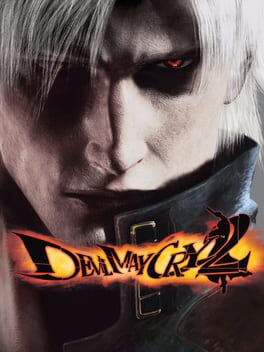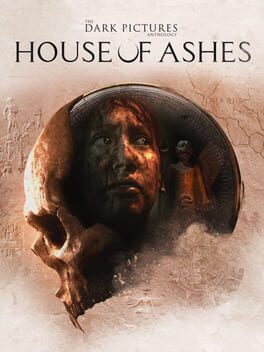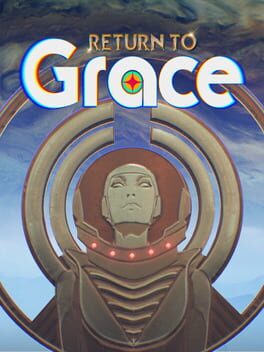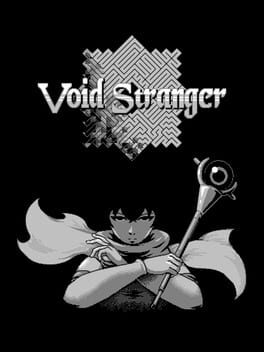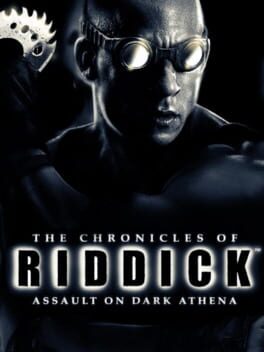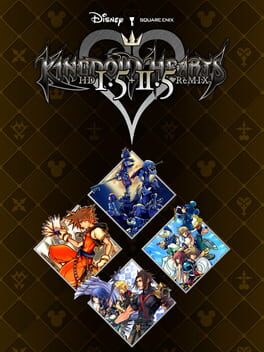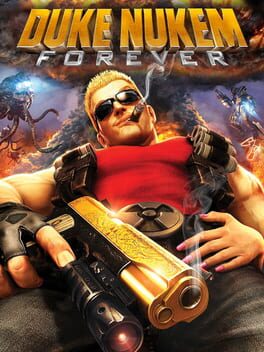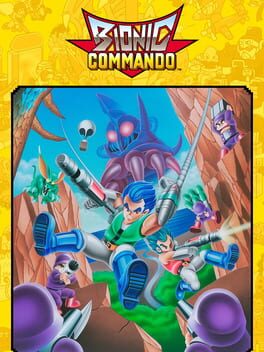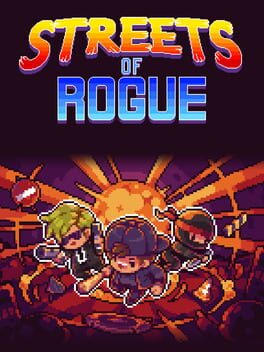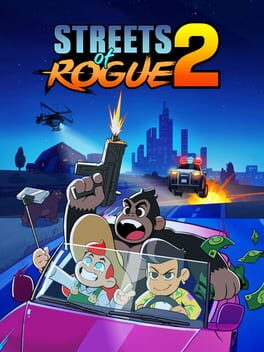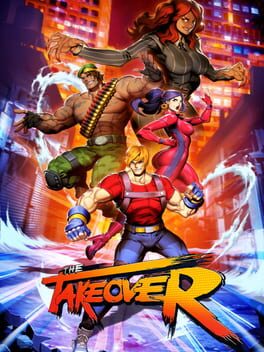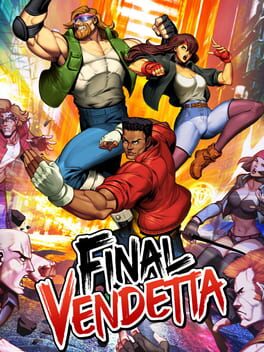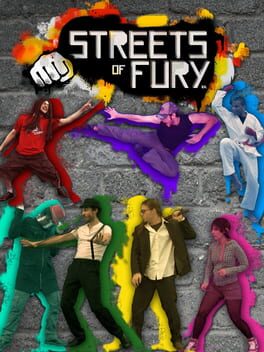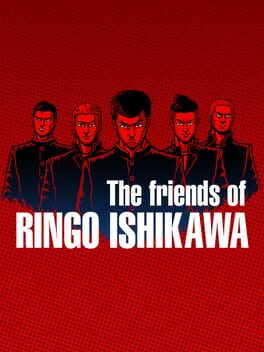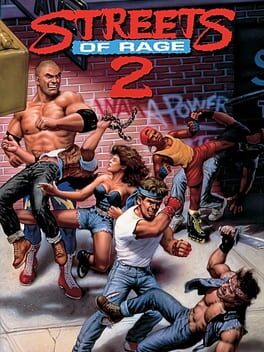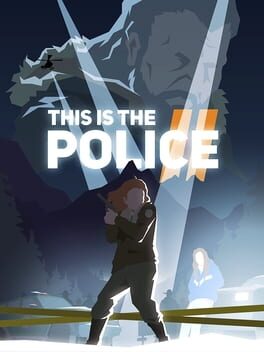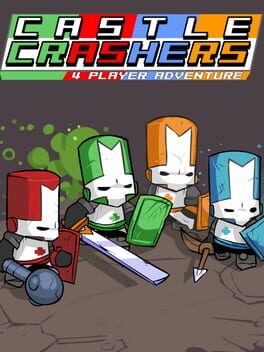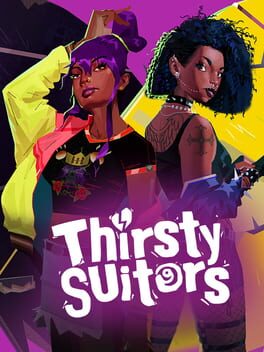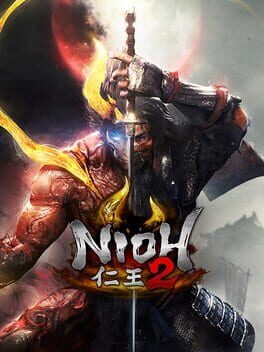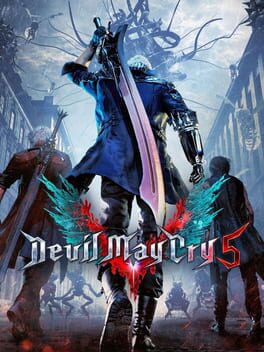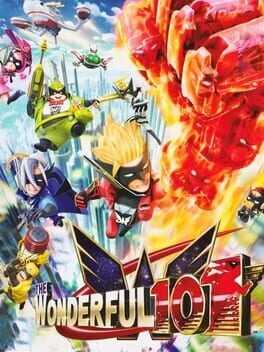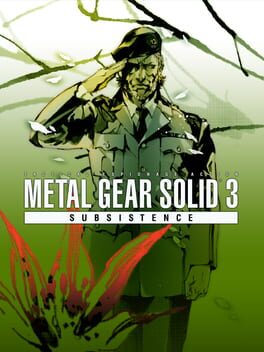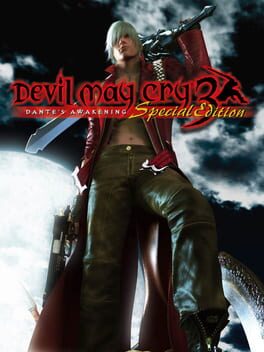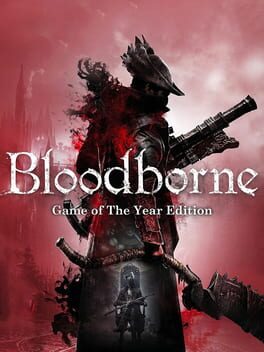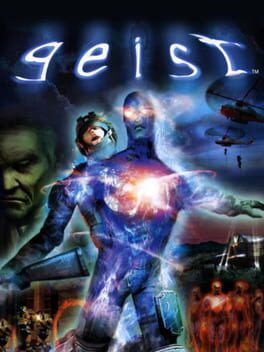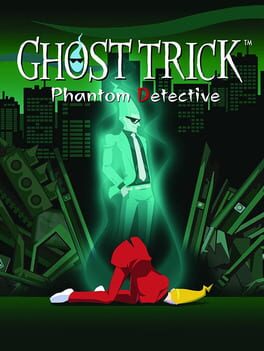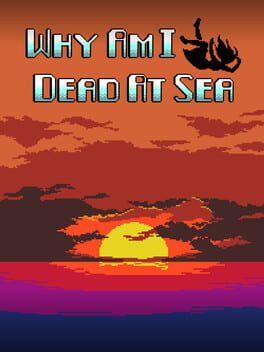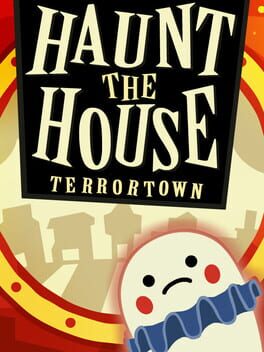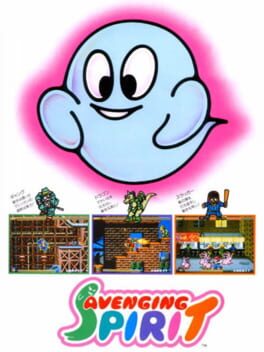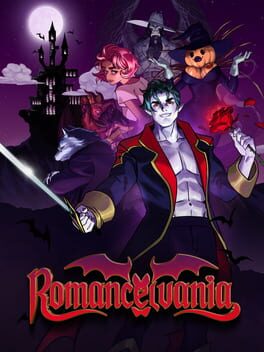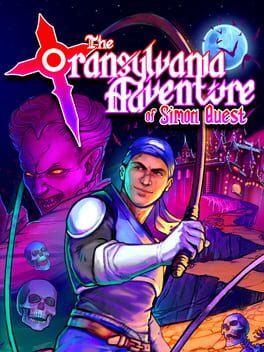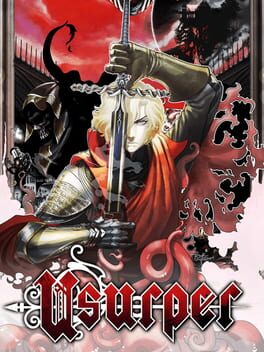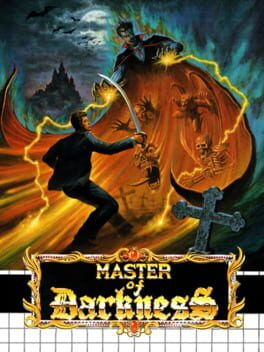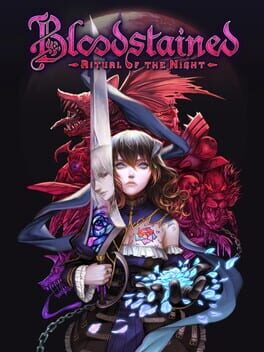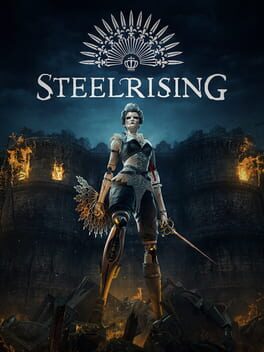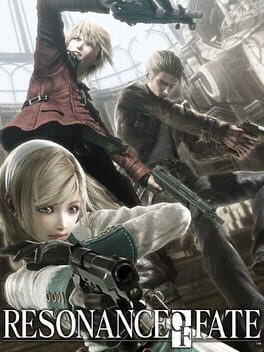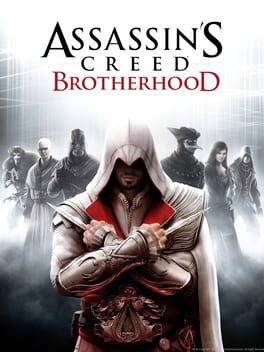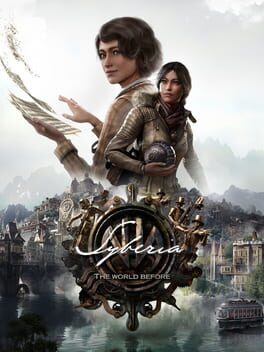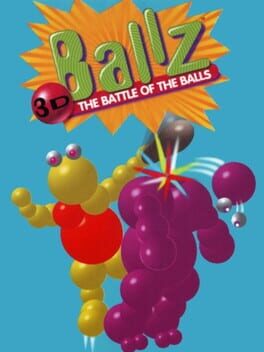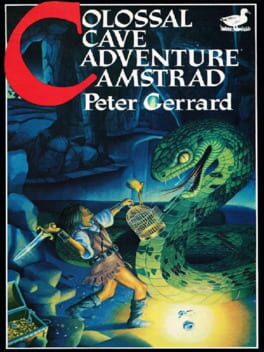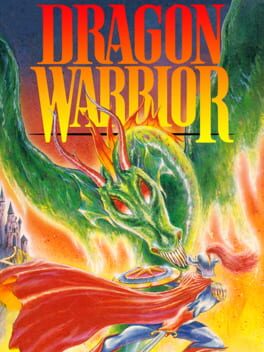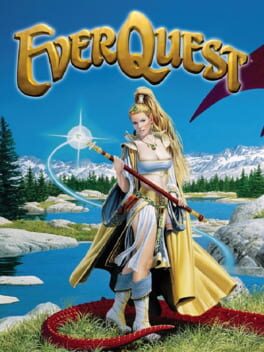Lucariun
1319 reviews liked by Lucariun
Final Fantasy VII
1997
“Words Aren’t The Only Thing That Tell People What You’re Thinking.”
Final Fantasy VII is my second entry in the series, after having played and finished everything Final Fantasy XV had to offer.
I knew that I would like this game, but my god I did not expect to be this happy to play it. It felt like a moment everythings occurred with a smooth flow from the beginning to the end, while being an ambitious open world.
I only knew one thing beforehand, being the most iconic death scene in the media that I could not escape being spoiled.
The rest is magnificent, this game amaze me because story wise it’s deep, I was not ready to see this much care into something that mostly children were going to experience. The relation between the entire cast is something that needs an article of its own to respectfully embrace the density of the work. But a few iconic moments that resonate with me must be noted, first the truth about Nanaki’s father, a very compelling backstory even if it’s obvious from a mile away. Then Valentine’s quest alongside Lucrecia where everything unfolds before our wetted eyes. And finally Barrett's moment before losing his arm, even if I found it a bit rushed at the end.
Nevertheless FF VII lives up to expectation story wise and surpasses them in terms of gameplay, seriously the action sequences in this game being enhanced by the 3D, the soundtracks or the cinematics are truly something that defined future video games. It demonstrates to the world how to tell a story without words only through gameplay, cutscene or characters behavior.
Moreover, FF VII has the nerve to put you in a number of surprising moments, such as the meeting with Zack's parents, Shinra president's final moment, or dialogue in the form of a Turk with a crush on Tifa. Little things that add a lot to the game world and character.
Then comes the characters that surprised me the most, first Sephiroth. He is the epitome of badassery, he's presented as a god before we even catch a glimpse of him, and when we do, it's always memorable.
Aerith is the purest human I've seen in a video game, truly a character that can soften any burden and any heart, whether inside or outside the game world. I knew about that scene, but it still broke my heart.
And Tifa managed to prove to me that she was going to be one of my favorite female characters in video games. She's got a hell of development, she's badass, a loving bird and her relationship with Cloud is a plus even though I haven't really liked Cloud as a character since the beginning of the game.
Finally, I understand now how this game came to be a PS1 classic, that’s being revisited on the fifth generation console through remakes.
Final Fantasy VII is my second entry in the series, after having played and finished everything Final Fantasy XV had to offer.
I knew that I would like this game, but my god I did not expect to be this happy to play it. It felt like a moment everythings occurred with a smooth flow from the beginning to the end, while being an ambitious open world.
I only knew one thing beforehand, being the most iconic death scene in the media that I could not escape being spoiled.
The rest is magnificent, this game amaze me because story wise it’s deep, I was not ready to see this much care into something that mostly children were going to experience. The relation between the entire cast is something that needs an article of its own to respectfully embrace the density of the work. But a few iconic moments that resonate with me must be noted, first the truth about Nanaki’s father, a very compelling backstory even if it’s obvious from a mile away. Then Valentine’s quest alongside Lucrecia where everything unfolds before our wetted eyes. And finally Barrett's moment before losing his arm, even if I found it a bit rushed at the end.
Nevertheless FF VII lives up to expectation story wise and surpasses them in terms of gameplay, seriously the action sequences in this game being enhanced by the 3D, the soundtracks or the cinematics are truly something that defined future video games. It demonstrates to the world how to tell a story without words only through gameplay, cutscene or characters behavior.
Moreover, FF VII has the nerve to put you in a number of surprising moments, such as the meeting with Zack's parents, Shinra president's final moment, or dialogue in the form of a Turk with a crush on Tifa. Little things that add a lot to the game world and character.
Then comes the characters that surprised me the most, first Sephiroth. He is the epitome of badassery, he's presented as a god before we even catch a glimpse of him, and when we do, it's always memorable.
Aerith is the purest human I've seen in a video game, truly a character that can soften any burden and any heart, whether inside or outside the game world. I knew about that scene, but it still broke my heart.
And Tifa managed to prove to me that she was going to be one of my favorite female characters in video games. She's got a hell of development, she's badass, a loving bird and her relationship with Cloud is a plus even though I haven't really liked Cloud as a character since the beginning of the game.
Finally, I understand now how this game came to be a PS1 classic, that’s being revisited on the fifth generation console through remakes.
Devil May Cry 2
2012
Two men approach a ledge. They are underground in an incredibly hostile environment that neither could foresee arriving in when they woke up that morning. They are tired, mentally frayed and have an uneasy trust in each other based entirely on circumstances. The first man reaches the ledge, after an awkwardly long second staring he finally drops down the 3ft drop to continue along the dimly lit path. The second man approaches the ledge but rather than drop down he freezes, staring at it whilst his comrade looks at him perplexed. The man walks away from the ledge before coming back to it freezing again. He refused to jump down to continue their trek. Was it fear preventing him? Had the ordeal and horrors he'd witnessed finally pushed his mind to far?
No, it's just that playing House of Ashes in online co-op was a miserable buggy experience.
You see I played this with a friend, we play together nearly every evening and are always looking for a new Playstation co-op experience. We had enjoyed Man of Medan despite some issues and heard this game was supposedly all around the better of the two. We ran into constant technical problems though. Characters getting stuck, locking up for no reason. The game taking forever to actually perform an action, even picking up an item to look at was a complete chore of waiting 10 seconds to see if they would actually move. We had to quit out and restart half a dozen times to get past various sections and by the end we were frustrated by it all. The thing is it wasn't just the technical problems but a variety of issues built up leaving a bitter taste in our mouths. We beat the game, kind of hated it and moved onto Wild Hearts. The thing is, I decided to go back to it to see if the game was better playing it on my own and my second experience has left me softer towards it overall though certain flaws continue regardless of player occupancy.
For those unaware The Dark Pictures Anthology is a series of horror games by developer Supermassive Games that are more like quick time event interactive movies. Your inputs decide the outcome and the wrong move at the wrong time can see characters permanently die and adjust the story outcome slightly. Our first issue with this game is the button prompts for these events. They are based on the PS5 controller with white buttons with the Cross, Triangle, Square and Circle symbols overlayed in grey. They aren't clear without colour to tell them apart and when you only have a second to work it out...well the design is awful. I went into the accessibility options to change them all to cross because it was implemented so badly when playing on my own. I will at least give them credit for those features.
A lot of the rest of the game has it's ups and downs as well. I really liked the setting going with a Mesopotamian historical influence which isn't something seen in games all too much. The modern plot setting there of the 2003 invasion of Iraq looking for chemical weapons however certainly is...a choice. It did allow a good relationship build up between two characters of Jason a lieutenant in the US marines and Salim a sergeant in the Iraqi army. Their characters and relationship are the two best parts of the whole game with some well written dialog and voice acting that bring them to life as being both professional and empathetic. If only the rest of the writing was as good or even competent because most of the other characters are just unrelatable buffoons. I didn't care for the forced interpersonal drama between 3 of them and was quite happy for them to die. They are needlessly confrontational, rude and in a lot of cases completely inconsistent. In one scene as an example:
Character 1: "What's there to think about? We go and save him"
Character 2: thinks about it for a second
Character 1: "He isn't one of us lets leave him"
It's like they are different people from line to line at times completely breaking immersion when they 180, never mind in the same conversation. Frankly except Jason and Salim they are all extremely unlikeable. I understand the developers want to build a varied cast that will leave difficult decisions for the player with conflict but they went overboard leaving a negative experience in a lot of scenes because I just didn't care about what happened to any of them.
The story also kind of lacks suspense and scares which I was surprised by. It has an interesting setting and atmosphere but it never really uses them to build up any tension or fear of the unknown. Except for a few scenes early on the game is more just a military shooter than a horror title. The magic is gone when the monster is revealed and the curtain gets drawn back. In this case it just happens all too early.
I will say my second playthrough was far more enjoyable overall regardless of the issues above. The only bugs playing solo was a trophy not unlocking (I had to disconnect from the internet and restart my PS5 replaying the scene to unlock it as a work around found by the community). I really like the visuals and general ideas presented here, they just needed more polish and to iron out the cast to a better degree. Still I am glad I went back to it as it has convinced me to play the second game in the series Little Hope which I had initially written off after my first playthrough of House of ashes, I just won't play it online...
+ Jason and Salim are great characters with an excellent comradery.
+ Visuals are gorgeous.
+ Mesopotamian setting is a nice choice.
- The other characters could all rot for all I care.
- Playstation quick time buttons are unclear.
- Online is a constant buggy mess and a semi bugged trophy.
- Not scary, no tension or build up.
- War setting is...a choice.
No, it's just that playing House of Ashes in online co-op was a miserable buggy experience.
You see I played this with a friend, we play together nearly every evening and are always looking for a new Playstation co-op experience. We had enjoyed Man of Medan despite some issues and heard this game was supposedly all around the better of the two. We ran into constant technical problems though. Characters getting stuck, locking up for no reason. The game taking forever to actually perform an action, even picking up an item to look at was a complete chore of waiting 10 seconds to see if they would actually move. We had to quit out and restart half a dozen times to get past various sections and by the end we were frustrated by it all. The thing is it wasn't just the technical problems but a variety of issues built up leaving a bitter taste in our mouths. We beat the game, kind of hated it and moved onto Wild Hearts. The thing is, I decided to go back to it to see if the game was better playing it on my own and my second experience has left me softer towards it overall though certain flaws continue regardless of player occupancy.
For those unaware The Dark Pictures Anthology is a series of horror games by developer Supermassive Games that are more like quick time event interactive movies. Your inputs decide the outcome and the wrong move at the wrong time can see characters permanently die and adjust the story outcome slightly. Our first issue with this game is the button prompts for these events. They are based on the PS5 controller with white buttons with the Cross, Triangle, Square and Circle symbols overlayed in grey. They aren't clear without colour to tell them apart and when you only have a second to work it out...well the design is awful. I went into the accessibility options to change them all to cross because it was implemented so badly when playing on my own. I will at least give them credit for those features.
A lot of the rest of the game has it's ups and downs as well. I really liked the setting going with a Mesopotamian historical influence which isn't something seen in games all too much. The modern plot setting there of the 2003 invasion of Iraq looking for chemical weapons however certainly is...a choice. It did allow a good relationship build up between two characters of Jason a lieutenant in the US marines and Salim a sergeant in the Iraqi army. Their characters and relationship are the two best parts of the whole game with some well written dialog and voice acting that bring them to life as being both professional and empathetic. If only the rest of the writing was as good or even competent because most of the other characters are just unrelatable buffoons. I didn't care for the forced interpersonal drama between 3 of them and was quite happy for them to die. They are needlessly confrontational, rude and in a lot of cases completely inconsistent. In one scene as an example:
Character 1: "What's there to think about? We go and save him"
Character 2: thinks about it for a second
Character 1: "He isn't one of us lets leave him"
It's like they are different people from line to line at times completely breaking immersion when they 180, never mind in the same conversation. Frankly except Jason and Salim they are all extremely unlikeable. I understand the developers want to build a varied cast that will leave difficult decisions for the player with conflict but they went overboard leaving a negative experience in a lot of scenes because I just didn't care about what happened to any of them.
The story also kind of lacks suspense and scares which I was surprised by. It has an interesting setting and atmosphere but it never really uses them to build up any tension or fear of the unknown. Except for a few scenes early on the game is more just a military shooter than a horror title. The magic is gone when the monster is revealed and the curtain gets drawn back. In this case it just happens all too early.
I will say my second playthrough was far more enjoyable overall regardless of the issues above. The only bugs playing solo was a trophy not unlocking (I had to disconnect from the internet and restart my PS5 replaying the scene to unlock it as a work around found by the community). I really like the visuals and general ideas presented here, they just needed more polish and to iron out the cast to a better degree. Still I am glad I went back to it as it has convinced me to play the second game in the series Little Hope which I had initially written off after my first playthrough of House of ashes, I just won't play it online...
+ Jason and Salim are great characters with an excellent comradery.
+ Visuals are gorgeous.
+ Mesopotamian setting is a nice choice.
- The other characters could all rot for all I care.
- Playstation quick time buttons are unclear.
- Online is a constant buggy mess and a semi bugged trophy.
- Not scary, no tension or build up.
- War setting is...a choice.
Return to Grace
2023
I thought this was fantastic. A bite sized walking sim with a solid story that reeled me in at just the right pace. It does that narrative thing I really like where they start the story basically in the middle, and the first half is getting caught up with where we even are and what we're doing. To me that makes for really fun storytelling because I like being given small clues and then time to guess at what they might mean. Ended up finishing the whole thing in one sitting!
Gameplay wise this is basically exploration and audio logs and that's it; normally this wouldn't appeal to me but Return to Grace has some fantastic voice acting backed up by strong, memorable characters. These have some obvious influences and there were some other pop culture references sprinkled throughout that I thought were great; they were thematically appropriate and felt like homages.
The slow walking speed is the biggest frustration, but it's kind of understandable since so much of the game is walking and talking that they don't want you blasting past like 3 scripted events while you're still listening to the first recording. But it really puts the damper on exploration and was a huge pain the one time I got turned around.
I can't stress enough what a big deal it is for me that the plot and worldbuilding are what drove me forward in this, because that's not usually what grabs me about games. The ideas presented were all pure, old-school, head-full-of-big-ideas science fiction and I was really impressed with the pacing and execution overall.
I've been to Canada a bunch of times and have friends there, so it warmed my heart to hear so many Canadian voices in one place. I suppose we should say thanks to the taxpayers of Ontario for this one as well, and yeah support the arts guys.
Gameplay wise this is basically exploration and audio logs and that's it; normally this wouldn't appeal to me but Return to Grace has some fantastic voice acting backed up by strong, memorable characters. These have some obvious influences and there were some other pop culture references sprinkled throughout that I thought were great; they were thematically appropriate and felt like homages.
The slow walking speed is the biggest frustration, but it's kind of understandable since so much of the game is walking and talking that they don't want you blasting past like 3 scripted events while you're still listening to the first recording. But it really puts the damper on exploration and was a huge pain the one time I got turned around.
I can't stress enough what a big deal it is for me that the plot and worldbuilding are what drove me forward in this, because that's not usually what grabs me about games. The ideas presented were all pure, old-school, head-full-of-big-ideas science fiction and I was really impressed with the pacing and execution overall.
I've been to Canada a bunch of times and have friends there, so it warmed my heart to hear so many Canadian voices in one place. I suppose we should say thanks to the taxpayers of Ontario for this one as well, and yeah support the arts guys.
Mini Metro
2015
As a kid, I was absolutely obsessed with subways. Whenever my family and I traveled to a new city, my immediate fixation was not the city’s many attractions but rather the intricate infrastructure linking all these various locales. While my family handled the destinations, I handled everything in-between. I wanted to know the most efficient way to get from point A to B, if there were any loopholes or special conditions necessitating an off-the-beaten-path itinerary, and most of all, I kept tabs on any planned changes regarding the evolving transportation so I could make notes of where to adjust and prioritize for future trips. I never realized it back then, but there was a certain satisfaction to memorizing every station and optimal route and running the simulations in my head that eventually led me down the path of engineering.
Mini Metro is essentially my childhood fascination with subways conceptualized as a video game. It’s super easy to pick up thanks to its minimalist design and intuitive controls; passengers are depicted with geometric symbols headed to corresponding symbolic destinations, distinctly colored subway lines are constructed by dragging your mouse between stops, and you can easily manipulate existing lines without disrupting progress by simply clicking and dragging sections of a line to new stops. At the same time, it can quickly become challenging, but this skill ceiling feels fairly approachable because the game is less about memorizing specific formulas and more about understanding implicit guidelines. For example, having a line that hits every stop in the area sounds appealing, but what’s less appealing is how much more time is subsequently spent traveling and loading/unloading passengers; you can at least somewhat account for this by toggling specific stations as “no-stop” to create express lines. The AI is fairly predictable and will always calculate the shortest path to the corresponding destination, but this also means that there’s real potential for them to overload the capacity of certain stations while in-transit between different lines. Alongside this, the game is great at organically iterating upon its basic formula to escalate difficulty by introducing more stops, altering the shape of stops to create more unique passengers and necessitate different routes, and increase the system’s load with more passengers while forcing the player to juggle their already limited number of lines, cars/carriages, and tunnels/bridges as also dictated with newly unlocked maps. At its core, it’s a game that’s great at subtly teaching players how to recognize bottlenecks and micromanage individual elements to fully understand how minor changes can quickly ripple across the fully intertwined system.
My only real nitpicks are that picking apart subway loops can get a bit annoying since you can only fiddle with one exposed end at a time while in loop form; it’s a minor complaint considering that you can pause the game at any time to more carefully reconstruct lines, but adding extra steps to reconstruct common subway loops is fairly noticeable considering Mini Metro’s elegant interface. Also, I do wish that there was a way to construct slightly longer paths along rivers instead of automatically building across them between certain junctions and using up my already limited supply of tunnels and bridges. Nevertheless, I acknowledge that this last gripe is mostly personal, and I think this game absolutely delivers upon its premise with precise execution. With so many different maps and daily challenges to boot, there’s plenty of content to exhaust within the game, and if one finds the basic experience too stressful or is more interested in sheer experimentation, then they can simply turn to endless and creative modes instead. For an accessible yet deceptively deep management game that gives great bang for your buck, I’d say Mini Metro is a fantastic entry point into the world of optimization simulators that more than holds its own against its more daunting peers.
Mini Metro is essentially my childhood fascination with subways conceptualized as a video game. It’s super easy to pick up thanks to its minimalist design and intuitive controls; passengers are depicted with geometric symbols headed to corresponding symbolic destinations, distinctly colored subway lines are constructed by dragging your mouse between stops, and you can easily manipulate existing lines without disrupting progress by simply clicking and dragging sections of a line to new stops. At the same time, it can quickly become challenging, but this skill ceiling feels fairly approachable because the game is less about memorizing specific formulas and more about understanding implicit guidelines. For example, having a line that hits every stop in the area sounds appealing, but what’s less appealing is how much more time is subsequently spent traveling and loading/unloading passengers; you can at least somewhat account for this by toggling specific stations as “no-stop” to create express lines. The AI is fairly predictable and will always calculate the shortest path to the corresponding destination, but this also means that there’s real potential for them to overload the capacity of certain stations while in-transit between different lines. Alongside this, the game is great at organically iterating upon its basic formula to escalate difficulty by introducing more stops, altering the shape of stops to create more unique passengers and necessitate different routes, and increase the system’s load with more passengers while forcing the player to juggle their already limited number of lines, cars/carriages, and tunnels/bridges as also dictated with newly unlocked maps. At its core, it’s a game that’s great at subtly teaching players how to recognize bottlenecks and micromanage individual elements to fully understand how minor changes can quickly ripple across the fully intertwined system.
My only real nitpicks are that picking apart subway loops can get a bit annoying since you can only fiddle with one exposed end at a time while in loop form; it’s a minor complaint considering that you can pause the game at any time to more carefully reconstruct lines, but adding extra steps to reconstruct common subway loops is fairly noticeable considering Mini Metro’s elegant interface. Also, I do wish that there was a way to construct slightly longer paths along rivers instead of automatically building across them between certain junctions and using up my already limited supply of tunnels and bridges. Nevertheless, I acknowledge that this last gripe is mostly personal, and I think this game absolutely delivers upon its premise with precise execution. With so many different maps and daily challenges to boot, there’s plenty of content to exhaust within the game, and if one finds the basic experience too stressful or is more interested in sheer experimentation, then they can simply turn to endless and creative modes instead. For an accessible yet deceptively deep management game that gives great bang for your buck, I’d say Mini Metro is a fantastic entry point into the world of optimization simulators that more than holds its own against its more daunting peers.
Void Stranger
2023
Com ZeroRanger eu já olhava para a System Erasure com um dos grandes estúdios de jogos atualmente, por ter me proporcionado uma experiência única, tanto em gameplay, trilha sonora, história e entre outras coisas, que me fizeram continuar jogando e amando ZR. Foi uma experiência incrível, na época foi meu shmup favorito; eu finalizei próximo ao lançamento de Void Stranger, e bem, vi pessoas comentando sobre o novo lançamento e fiquei extremamente animado para jogar. Apenas há pouco consegui comprar, e finalmente “finalizei”, esse segundo jogo da System Erasure. Que em minha visão é o vídeo-game mais especial lançado nesses últimos anos. Começa tudo simples, o começo de uma aventura, explorando o Void (vazio), um cajado que transfere blocos de um local á outro, e a mente do jogador. Os dois compõem as chaves para a progressão inicial. Como jogador de primeira viagem com Sokoban, foi uma experiência um pouco chata de começo, toda via, me adaptei e comecei a me divertir; a ponto de passar de algumas partes médias-difíceis em pouco tempo. E acredito que se até eu, que inicialmente era um não-amante da gameplay, qualquer um pode se acostumar e começar a amar jogar.
A uma cada quantia de fases que você conclui, você se vê em uma fase com uma árvore e uma escada para ir a próxima, o jogador curioso vai e interage com a árvore ali presente, e em seguida aceita a se deitar nela, o jogo fecha e a provável reação é de surpresa e estranheza, mas após abrir o jogo novamente… uma cena, diálogos, novos personagens. Tudo isso dentro desse jogo? Não era só um Sokoban para quebrar a cabeça? E conforme mais você continua descendo no vazio, mais você encontra partes da história. Que inclusive é extremamente linda, caso você veja vários finais (vai se emocionar, provavelmente — eu me emocionei).
Toda a construção por trás de você ter diversos finais, sempre mais e mais conteúdo, obrigando o jogador a sempre fazer novas runs, se adaptar as centenas de fases que irão ser retomadas várias e várias vezes. Mas além da adaptação, você fazer tudo para sempre ver mais uma parte nova sobre a grande lore, faz tudo divertido. Além de fases novas que podem estar presentes, trazendo um novo desafio ao jogador, é um jogo que te faz se “arrastar” dentro dele, e eu admiro bastante isso. Não duvido que daqui alguns meses alguém descubra novas coisas dele, e isso é INCRÍVEL, um jogo que não vai estar se limitando em uma só aventura, você não vai passar o jogo todo em puzzles, do nada pode ficar de cara com um mini game de ritmo, batalhas em turno, e mais loucuras. É o fator de repetir, em que você descobre o que há ali, por trás dos mistérios e coisas que ainda restam a serem vistas nessa imensidão de jogo
A trilha sonora, que não tem muito o que falar, assim como em ZeroRanger, capricharam absurdamente, muitas músicas entraram para playlists minhas, são boas a nível de não funcionarem só jogando e imerso naquilo, mas em qualquer momento, escutando elas, ainda continuam extremamente agradáveis, tipo essa: OST 63
Uma Obra Prima, não só dos indies, mas dos jogos eletrônicos em um geral, um jogo que exala a essência dos vídeo-games. 10/10
A uma cada quantia de fases que você conclui, você se vê em uma fase com uma árvore e uma escada para ir a próxima, o jogador curioso vai e interage com a árvore ali presente, e em seguida aceita a se deitar nela, o jogo fecha e a provável reação é de surpresa e estranheza, mas após abrir o jogo novamente… uma cena, diálogos, novos personagens. Tudo isso dentro desse jogo? Não era só um Sokoban para quebrar a cabeça? E conforme mais você continua descendo no vazio, mais você encontra partes da história. Que inclusive é extremamente linda, caso você veja vários finais (vai se emocionar, provavelmente — eu me emocionei).
Toda a construção por trás de você ter diversos finais, sempre mais e mais conteúdo, obrigando o jogador a sempre fazer novas runs, se adaptar as centenas de fases que irão ser retomadas várias e várias vezes. Mas além da adaptação, você fazer tudo para sempre ver mais uma parte nova sobre a grande lore, faz tudo divertido. Além de fases novas que podem estar presentes, trazendo um novo desafio ao jogador, é um jogo que te faz se “arrastar” dentro dele, e eu admiro bastante isso. Não duvido que daqui alguns meses alguém descubra novas coisas dele, e isso é INCRÍVEL, um jogo que não vai estar se limitando em uma só aventura, você não vai passar o jogo todo em puzzles, do nada pode ficar de cara com um mini game de ritmo, batalhas em turno, e mais loucuras. É o fator de repetir, em que você descobre o que há ali, por trás dos mistérios e coisas que ainda restam a serem vistas nessa imensidão de jogo
A trilha sonora, que não tem muito o que falar, assim como em ZeroRanger, capricharam absurdamente, muitas músicas entraram para playlists minhas, são boas a nível de não funcionarem só jogando e imerso naquilo, mas em qualquer momento, escutando elas, ainda continuam extremamente agradáveis, tipo essa: OST 63
Uma Obra Prima, não só dos indies, mas dos jogos eletrônicos em um geral, um jogo que exala a essência dos vídeo-games. 10/10
The Last Guardian
2016
There seems to be a prevalent expectation that as games evolved, they also became exponentially more approachable. Higher budgets resulted in smoother graphics and fewer bugs. More complex controls (adding left/right triggers, then adding one/two joysticks, then dabbling with motion inputs, etc) gave players a firmer grasp over their characters. AI became more predictable as their algorithms became more intricate to capture a wider range of responses. In a sense, as the technology expanded, the resulting products seemingly became more streamlined to better suit the player’s needs while more thoroughly capturing a developer’s vision.
Team Ico has never been about following tradition, however. If anything, the evolution of their titles embodies the regression of player control, choosing to instead utilize technological advancements not just to refine its premise via "design by subtraction" as chump has pointed out, but to deliver an entirely new experience altogether. Ico was a classic tale of boy meets girl; the girl had to be freed from her cage and pulled around the castle, as the boy protected her against everything in her way to prevent her demise. Shadow of the Colossus, however, was a story concerned with the struggle over control. The lone wanderer, in his quest to revive Mono, hunts down various several-story colossi capable of swatting him about like a fly. In the resulting desperate dance of death, he at first struggles to climb their hulking figures, hanging on for dear life until he discovers their weak points and stabs the colossi while they helplessly flail about. In other words, it's a game about trying to regain any semblance of control until you realize after the fact that the only shadow left was the literal shadow cast by Wander over their fallen corpse.
The Last Guardian then, can be thought of as the natural evolution of Team Ico titles, in that it melds previous design sensibilities and thrives off of disempowering the player throughout its entirety. Trico, the player’s companion and a cross between cat and bird, is essentially the analog to Wander’s horse in Shadow of the Colossus, Agro. Fumito Ueda designed Agro as a companion rather than just a vehicle, and had his team develop specific movement algorithms that would allow Agro to steer herself without the player’s explicit control, forcing players to put their trust in their steed during certain fights emphasizing bow aiming. Ueda and his new team at GenDesign iterated upon this idea, explicitly creating environments where the player was forced to rely upon Trico’s actions to progress and thus establish dependency between the boy and his companion.
While the game can be thought of as an inversion of Ico in this sense, its design influence upon The Last Guardian should not go overlooked, particularly in how the game captures Ico’s physicality. Ico’s key strength was establishing a sense of presence through minimalist puzzles that lacked overly gamey elements, namely in how Ico interacted with his surroundings. Players are subtly guided into climbing chains, pulling levers, sitting on stone sofas to save, and most importantly, holding down R1 to hold Yorda by the hand around the castle and pull her out of danger whenever captured. The Last Guardian innovates upon this by combining several of the traversable elements and the companion into one. To better navigate the vast ruins, the boy must guide Trico and utilize their tall body of climbable feathers in order to scale heights, while occasionally dragging around their large tail and dangling it over ledges to safely climb down. Most importantly, you get to pet Trico whenever you feel like it to comfort your friend in both their happiest and most emotionally taxing moments. In both Ico and The Last Guardian, the player’s constant contact with both the environment and their companion keeps them firmly rooted within its constructed sense of reality by regularly reminding them of their companion’s physical presence.
This physicality would not be as significant without the lessons learned from Shadow of the Colossus however, not just regarding AI behavior but also specifically in how it adapts the game’s sense of scale. Trico is large, and the boy is small. As mentioned previously, Trico can utilize their size to lean against walls and give the boy a step up, but they can also utilize their weight to hold down large chains and swipe away at imposing bodies of armor. Meanwhile, the boy is much more agile and can fit into otherwise inaccessible small spaces by Trico, squeezing through narrow tunnels and gaps in metal gates to pull switches and let his partner through. This obvious difference in size creates consistent room for contrast, not just in how the two characters differ in terms of functionality but also in terms of their scale when measured against the traversed liminal spaces of the ruins, constantly transforming from immense empty rooms to constrained and suffocating tunnels and corridors.
What is particularly interesting is not just The Last Guardian’s disempowerment or sense of scale, but rather what it manages to achieve with said elements and the resulting contrast to establish interdependency between the two characters and solidify their relationship. The combat, an almost complete inverse of Ico’s combat, is the most obvious example. Rather than defending Yorda by whacking shadow enemies with a stick, the roles have been reversed, in that the player must rely upon Trico to guard against scores of possessed armor as to avoid getting kidnapped himself. Even so, the game plays around with this idea of vulnerability, shifting the onus of responsibility about as the boy often finds himself in positions where he must actively support or protect Trico, such as disposing of glass eyes that scare his friend or scrambling to pull a nearby switch to lower a bridge and give Trico room to climb up to safety. The game is even willing to occasionally break its own rules to demonstrate how this sense of caring evolves past its defined guidelines. In almost any other game, this mechanical inconsistency would be regarded as a flaw, but it is this sense of doubt that creates room for the relationship to build from in the first place, and is perhaps the game’s most understated strength.
This is not to say that The Last Guardian was bereft of limitations regarding the execution of its ambitious scope. The most pressing challenge that Ueda and his team faced was how to balance its constructed sense of reality with regards to player expectations; that is, it had to find meaningful ways to commit to its vision of establishing the relationship between the boy and Trico while also acknowledging and appeasing players that would otherwise get lost or frustrated. Perhaps the most obvious downgrade from Ico is the presence of constant button prompts appearing on-screen to alert the players on how to better control the boy and instruct Trico; while the frequency of the prompts lessens over time, it is a slight disappointment that the game doesn’t simply force the players to experiment with inputs and commands as a more subtle and trusting substitute. This downfall however, is an anomaly amongst The Last Guardian’s other shortcomings, as it manages to successfully disguise many of its other concessions and limitations. There’s a classic “escape from the collapsing structure” sequence where all you do is hold forward and jump, but the game gets away with it because the player is used to being framed as a helpless participant. There’s occasional voice-over dialogue hints whenever the player has been stuck for a while in the same area, but it feels far less intrusive than Dormin’s repeated and booming hints in Shadow of the Colossus because the game has already established itself as a retrospective re-telling from the now grown boy’s point of view. Trico doesn’t respond immediately to the boy’s commands when being told where to go, but it makes sense that they wouldn’t function like clockwork and would need time to spot and process the situation from their own point of view, so the lag in response feels justified. It doesn’t matter that certain isolated elements of the game would crumble under scrutiny. What matters is that the situational context to allow players to suspend their disbelief is almost always present; in other words, the illusion holds up.
I’m still learning more about the game to this day. There are so many little details that I wouldn’t have spotted upon a first playthrough, and it’s an absolute joy finally getting to gush upon spotting them in replays. Of course it makes sense that you can’t just issue specific commands to Trico at the very start as a sequence-break despite not being taught by the game; after all, Trico hasn’t had time to observe you and mimic your actions to carry out such commands. Of course the hostile creatures that look exactly like your friend behave similarly; how can you then use your preconceived knowledge of their physiology to aid your friend in a fight against their copycat? I also can’t help but appreciate how GenDesign condensed so much learning within its introduction; in the first ten minutes alone, you’re hinted on how to later deal with the bodies of armor (the magical runes that appear before waking up are the exact same as the runes that appear when grabbed, and are dispelled in the same manner of furiously mashing buttons), you get to figure out how Trico’s eyes change colors depending upon whether they’re mesmerized or hostile, and it quickly establishes the premise of building up trust with a very wary creature that’s more than likely to misunderstand or ignore you at first. Combine all of these nuances with the game’s ability to destabilize and diversify playthroughs via Trico’s innate curiosity and semi-unpredictable instincts, and you get a game that becomes easier to appreciate the more the player familiarizes themselves with its inner workings.
I think a lot of criticism for The Last Guardian ultimately comes down to less of what we perceive the game is and more of what we perceive the game isn’t. It’s not a fully player-controlled puzzle-platforming game like Ico, it’s not a puzzle-combat game with spectacle like Shadow of the Colossus, and it’s certainly not a classic companion escort-quest game where you can just order Trico around like a robot and expect automatic results every time. Instead of focusing on the progression of more complex controls and puzzles, The Last Guardian is focused on the progression of a seemingly more complex relationship. I’m not going to pretend that everyone will get something out of this game, as it definitely requires a good deal of patience and player investment to meet the game halfway. It’s certainly more difficult to appreciate given its lack of influence unlike Ico or its lack of exhilarating boss encounters unlike Shadow of the Colossus. That said, it’s this element of danger in its ability to commit to its vision while alienating impatient players that makes it such a compelling title once it finally clicks. Many before me have pointed out how powerful the bond between the player and Trico felt upon learning from others that improperly caring for Trico results in your companion stubbornly ignoring the player’s commands; after all, volume swells cannot exist without contrast to provide room for growth. Perhaps this is why at the end of the day, I find myself transfixed by every word that Fumito Ueda has to offer. In an era where developers feel overly concerned with the best and brightest, he doesn’t seem concerned about what video games mean so much as what video games are. I can only hope that someday, he and GenDesign will return to bring us a new title that captures our imagination as thoroughly as many of his works already have for me.
Team Ico has never been about following tradition, however. If anything, the evolution of their titles embodies the regression of player control, choosing to instead utilize technological advancements not just to refine its premise via "design by subtraction" as chump has pointed out, but to deliver an entirely new experience altogether. Ico was a classic tale of boy meets girl; the girl had to be freed from her cage and pulled around the castle, as the boy protected her against everything in her way to prevent her demise. Shadow of the Colossus, however, was a story concerned with the struggle over control. The lone wanderer, in his quest to revive Mono, hunts down various several-story colossi capable of swatting him about like a fly. In the resulting desperate dance of death, he at first struggles to climb their hulking figures, hanging on for dear life until he discovers their weak points and stabs the colossi while they helplessly flail about. In other words, it's a game about trying to regain any semblance of control until you realize after the fact that the only shadow left was the literal shadow cast by Wander over their fallen corpse.
The Last Guardian then, can be thought of as the natural evolution of Team Ico titles, in that it melds previous design sensibilities and thrives off of disempowering the player throughout its entirety. Trico, the player’s companion and a cross between cat and bird, is essentially the analog to Wander’s horse in Shadow of the Colossus, Agro. Fumito Ueda designed Agro as a companion rather than just a vehicle, and had his team develop specific movement algorithms that would allow Agro to steer herself without the player’s explicit control, forcing players to put their trust in their steed during certain fights emphasizing bow aiming. Ueda and his new team at GenDesign iterated upon this idea, explicitly creating environments where the player was forced to rely upon Trico’s actions to progress and thus establish dependency between the boy and his companion.
While the game can be thought of as an inversion of Ico in this sense, its design influence upon The Last Guardian should not go overlooked, particularly in how the game captures Ico’s physicality. Ico’s key strength was establishing a sense of presence through minimalist puzzles that lacked overly gamey elements, namely in how Ico interacted with his surroundings. Players are subtly guided into climbing chains, pulling levers, sitting on stone sofas to save, and most importantly, holding down R1 to hold Yorda by the hand around the castle and pull her out of danger whenever captured. The Last Guardian innovates upon this by combining several of the traversable elements and the companion into one. To better navigate the vast ruins, the boy must guide Trico and utilize their tall body of climbable feathers in order to scale heights, while occasionally dragging around their large tail and dangling it over ledges to safely climb down. Most importantly, you get to pet Trico whenever you feel like it to comfort your friend in both their happiest and most emotionally taxing moments. In both Ico and The Last Guardian, the player’s constant contact with both the environment and their companion keeps them firmly rooted within its constructed sense of reality by regularly reminding them of their companion’s physical presence.
This physicality would not be as significant without the lessons learned from Shadow of the Colossus however, not just regarding AI behavior but also specifically in how it adapts the game’s sense of scale. Trico is large, and the boy is small. As mentioned previously, Trico can utilize their size to lean against walls and give the boy a step up, but they can also utilize their weight to hold down large chains and swipe away at imposing bodies of armor. Meanwhile, the boy is much more agile and can fit into otherwise inaccessible small spaces by Trico, squeezing through narrow tunnels and gaps in metal gates to pull switches and let his partner through. This obvious difference in size creates consistent room for contrast, not just in how the two characters differ in terms of functionality but also in terms of their scale when measured against the traversed liminal spaces of the ruins, constantly transforming from immense empty rooms to constrained and suffocating tunnels and corridors.
What is particularly interesting is not just The Last Guardian’s disempowerment or sense of scale, but rather what it manages to achieve with said elements and the resulting contrast to establish interdependency between the two characters and solidify their relationship. The combat, an almost complete inverse of Ico’s combat, is the most obvious example. Rather than defending Yorda by whacking shadow enemies with a stick, the roles have been reversed, in that the player must rely upon Trico to guard against scores of possessed armor as to avoid getting kidnapped himself. Even so, the game plays around with this idea of vulnerability, shifting the onus of responsibility about as the boy often finds himself in positions where he must actively support or protect Trico, such as disposing of glass eyes that scare his friend or scrambling to pull a nearby switch to lower a bridge and give Trico room to climb up to safety. The game is even willing to occasionally break its own rules to demonstrate how this sense of caring evolves past its defined guidelines. In almost any other game, this mechanical inconsistency would be regarded as a flaw, but it is this sense of doubt that creates room for the relationship to build from in the first place, and is perhaps the game’s most understated strength.
This is not to say that The Last Guardian was bereft of limitations regarding the execution of its ambitious scope. The most pressing challenge that Ueda and his team faced was how to balance its constructed sense of reality with regards to player expectations; that is, it had to find meaningful ways to commit to its vision of establishing the relationship between the boy and Trico while also acknowledging and appeasing players that would otherwise get lost or frustrated. Perhaps the most obvious downgrade from Ico is the presence of constant button prompts appearing on-screen to alert the players on how to better control the boy and instruct Trico; while the frequency of the prompts lessens over time, it is a slight disappointment that the game doesn’t simply force the players to experiment with inputs and commands as a more subtle and trusting substitute. This downfall however, is an anomaly amongst The Last Guardian’s other shortcomings, as it manages to successfully disguise many of its other concessions and limitations. There’s a classic “escape from the collapsing structure” sequence where all you do is hold forward and jump, but the game gets away with it because the player is used to being framed as a helpless participant. There’s occasional voice-over dialogue hints whenever the player has been stuck for a while in the same area, but it feels far less intrusive than Dormin’s repeated and booming hints in Shadow of the Colossus because the game has already established itself as a retrospective re-telling from the now grown boy’s point of view. Trico doesn’t respond immediately to the boy’s commands when being told where to go, but it makes sense that they wouldn’t function like clockwork and would need time to spot and process the situation from their own point of view, so the lag in response feels justified. It doesn’t matter that certain isolated elements of the game would crumble under scrutiny. What matters is that the situational context to allow players to suspend their disbelief is almost always present; in other words, the illusion holds up.
I’m still learning more about the game to this day. There are so many little details that I wouldn’t have spotted upon a first playthrough, and it’s an absolute joy finally getting to gush upon spotting them in replays. Of course it makes sense that you can’t just issue specific commands to Trico at the very start as a sequence-break despite not being taught by the game; after all, Trico hasn’t had time to observe you and mimic your actions to carry out such commands. Of course the hostile creatures that look exactly like your friend behave similarly; how can you then use your preconceived knowledge of their physiology to aid your friend in a fight against their copycat? I also can’t help but appreciate how GenDesign condensed so much learning within its introduction; in the first ten minutes alone, you’re hinted on how to later deal with the bodies of armor (the magical runes that appear before waking up are the exact same as the runes that appear when grabbed, and are dispelled in the same manner of furiously mashing buttons), you get to figure out how Trico’s eyes change colors depending upon whether they’re mesmerized or hostile, and it quickly establishes the premise of building up trust with a very wary creature that’s more than likely to misunderstand or ignore you at first. Combine all of these nuances with the game’s ability to destabilize and diversify playthroughs via Trico’s innate curiosity and semi-unpredictable instincts, and you get a game that becomes easier to appreciate the more the player familiarizes themselves with its inner workings.
I think a lot of criticism for The Last Guardian ultimately comes down to less of what we perceive the game is and more of what we perceive the game isn’t. It’s not a fully player-controlled puzzle-platforming game like Ico, it’s not a puzzle-combat game with spectacle like Shadow of the Colossus, and it’s certainly not a classic companion escort-quest game where you can just order Trico around like a robot and expect automatic results every time. Instead of focusing on the progression of more complex controls and puzzles, The Last Guardian is focused on the progression of a seemingly more complex relationship. I’m not going to pretend that everyone will get something out of this game, as it definitely requires a good deal of patience and player investment to meet the game halfway. It’s certainly more difficult to appreciate given its lack of influence unlike Ico or its lack of exhilarating boss encounters unlike Shadow of the Colossus. That said, it’s this element of danger in its ability to commit to its vision while alienating impatient players that makes it such a compelling title once it finally clicks. Many before me have pointed out how powerful the bond between the player and Trico felt upon learning from others that improperly caring for Trico results in your companion stubbornly ignoring the player’s commands; after all, volume swells cannot exist without contrast to provide room for growth. Perhaps this is why at the end of the day, I find myself transfixed by every word that Fumito Ueda has to offer. In an era where developers feel overly concerned with the best and brightest, he doesn’t seem concerned about what video games mean so much as what video games are. I can only hope that someday, he and GenDesign will return to bring us a new title that captures our imagination as thoroughly as many of his works already have for me.
Lost Judgment
2021
"Haahahahaha how the f*** is cyber bullying real hahahaha just walk away from the screen like just close your eyes"
It's always tough to take apart RGG's games in a review setting because I don't like to divulge spoilers, so I will remain abstinent in doing so here, but Lost Judgment is a tremendous step up from its predecessor while also suffering from the same good 'ol RGG trappings of years previous. What began as a mundane story investigating the gossip heavy bullying scenes of a yuppie high school in Ijincho quickly developes into a multi-faceted Batman-esque snafu stretching multiple generations. As is tradition with RGG, the spider-webbed nature of the story will grasp you as soon as you start to put the pieces of its mystery together. Moral greys run amock around both Yokohama and Kamurocho, forcing Yagami to side with previously sinister factions and tackle what it truly means to be just. He's a detective, lawyer, and ass-kicker all in one within this story, something that the previous title didn't hit all in one go to the degree I'd looked for.
As is second nature with the Like a Judgement games, therein lies a strong supporting cast that cascades the emotional moments into memorable sequences. Strong characters like Higashi, Suigura, the Genda Law crew, and Kaito are a fitting cast for Yagami's brazen attitude towards solving conflict, each lending a unique approach and a fresh state of mind to problem resolution. Mix this in with some of the best voice acting I've heard in a game in a long time (Greg Chun reprises his role as totally not Kaname Date, Steve Blum as Higashi, ProZD/Sungwon Cho as Tesso all for example) and you have one of the better crews in contemporary media. Just two short games spent with this crew and they feel familiar, like friends that are legitimately down to ride and invested in Yagami's mission and detectively mantra.
I enjoyed the game overall bigtime, however the typical Yakuza/RGG trappings hit me like a wall of bricks. Ah yes I do enjoy running to my objective to see every street obstructed by four to five hooligans in which I will beat the exact same way each time. Ah yes I do enjoy having to fight through four hundred miscellaneous members of "insert bad gang here" before the ending credits. Ah yes I do enjoy employing the same asinine sneaking mechanics and going through some slippery parkour sequences that felt like jumping through zero gravity bubbles of molasses. Even with an elite story, magnificent supporting crew and another excellent display of protaginism with Yagami, the issues I have with RGG still remain as an indictment onto my enjoyment of the game. For any fans of RGG at large I recommend Lost Judgment, and if you haven't played any of the Yakuza/Like a Dragon titles, Judgment and Lost Judgment are a good place to start.
It's always tough to take apart RGG's games in a review setting because I don't like to divulge spoilers, so I will remain abstinent in doing so here, but Lost Judgment is a tremendous step up from its predecessor while also suffering from the same good 'ol RGG trappings of years previous. What began as a mundane story investigating the gossip heavy bullying scenes of a yuppie high school in Ijincho quickly developes into a multi-faceted Batman-esque snafu stretching multiple generations. As is tradition with RGG, the spider-webbed nature of the story will grasp you as soon as you start to put the pieces of its mystery together. Moral greys run amock around both Yokohama and Kamurocho, forcing Yagami to side with previously sinister factions and tackle what it truly means to be just. He's a detective, lawyer, and ass-kicker all in one within this story, something that the previous title didn't hit all in one go to the degree I'd looked for.
As is second nature with the Like a Judgement games, therein lies a strong supporting cast that cascades the emotional moments into memorable sequences. Strong characters like Higashi, Suigura, the Genda Law crew, and Kaito are a fitting cast for Yagami's brazen attitude towards solving conflict, each lending a unique approach and a fresh state of mind to problem resolution. Mix this in with some of the best voice acting I've heard in a game in a long time (Greg Chun reprises his role as totally not Kaname Date, Steve Blum as Higashi, ProZD/Sungwon Cho as Tesso all for example) and you have one of the better crews in contemporary media. Just two short games spent with this crew and they feel familiar, like friends that are legitimately down to ride and invested in Yagami's mission and detectively mantra.
I enjoyed the game overall bigtime, however the typical Yakuza/RGG trappings hit me like a wall of bricks. Ah yes I do enjoy running to my objective to see every street obstructed by four to five hooligans in which I will beat the exact same way each time. Ah yes I do enjoy having to fight through four hundred miscellaneous members of "insert bad gang here" before the ending credits. Ah yes I do enjoy employing the same asinine sneaking mechanics and going through some slippery parkour sequences that felt like jumping through zero gravity bubbles of molasses. Even with an elite story, magnificent supporting crew and another excellent display of protaginism with Yagami, the issues I have with RGG still remain as an indictment onto my enjoyment of the game. For any fans of RGG at large I recommend Lost Judgment, and if you haven't played any of the Yakuza/Like a Dragon titles, Judgment and Lost Judgment are a good place to start.
PowerWash Simulator
2021
Got this for free via PS+ and gave it a few hours, and it was relaxing enough to begin with. Who wouldn't enjoy completely rinsing a car in five minutes with minimal effort? Unfortunately, the game gets real picky as you progress. Having to scour for that last invisible speck of dirt to fully clean a large wall or finding out which one of the sixteen identical wooden trims I had to more thoroughly investigate for every job really wore me out. Also, this might just be my experience playing on PS5 with a controller, but my right hand started aching after a half hour of constantly holding down the right trigger to continuously spray surfaces. Not a great feeling when you need a break from your gaming break!
167 lists liked by Lucariun
by cowboyjosh |
20 Games
by FallenGrace |
13 Games
by cowboyjosh |
32 Games
by ProudLittleSeal |
39 Games
by Daante_ |
40 Games
by Drax |
47 Games
by Daante_ |
48 Games
by FallenGrace |
20 Games
by FallenGrace |
11 Games
by cowboyjosh |
26 Games

